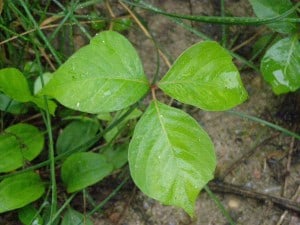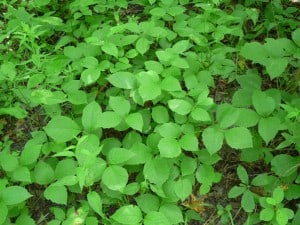I would be interested in knowing if people have been noticing more and bigger Poison Ivy plants in recent years. This is certainly my experience. Not only do larger areas seem to be covered by this native plant, but the plants themselves seem to be much larger. In many places, they are knee-height or higher. I was speaking with a man today who says his property on Lake Katchewanooka is now covered in Poison Ivy and that going into the woods during the summer is out of the question. I have noticed a growing abundance of the plant, too, along the Bridgenorth Trail, Trans-Canada Trail, Northumerland Forest, etc. Studies have shown that Poison Ivy responds positively to increased CO2 levels in the atmosphere (we are now at a record 400 ppm) and that this may explain the more rapid growth . The oil that causes the rash is more potent than ever before, too. This article may be of interest.
Drew Monkman

Poison Ivy – always a longer stem on middle leaflet; leaflets often asymmetrical; shiny; usually droop down a little – Drew Monkman
